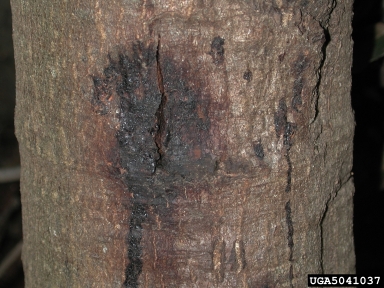Blog, What's Wrong With My Trees?
What’s wrong with my tree? Bleeding canker
Bleeding canker is caused by multiple species of Phytophthora
Are your trees giving the appearance that they’re bleeding? It’s not blood; it could be Phytophthora bleeding canker.
Phytophthora bleeding canker is a disease caused by multiple species of Phytophthora, a pathogen that infects the bark and outer

sapwood of trees. Phytophthora originates in the soil and can also cause root disease in addition to bleeding canker. The most common hosts of Phytophthora bleeding canker include:
- Oak
- Maple
- American beech
- Birch
- Magnolia
- Dogwood
- Walnut
Signs and symptoms of bleeding canker
Signs and symptoms of bleeding canker in your trees include:
- Dark sap oozing from bark cankers
- Inner sapwood turning dark red to reddish-brown in color
- Premature foliage drop
- Branch dieback
- Early fall color
Treating and managing bleeding canker
For effective treatment and management of bleeding canker in your trees, early detection is critical. This condition is chronic and can progress slowly. Have an ISA-Certified Arborist inspect your tree if you suspect Phytophthora bleeding canker.
Experts have noted a sharp rise in the occurrence of Phytophthora diseases in recent years. Preventive treatments of bark applied fungicides have proven to be an effective deterrent. If the disease is further along, removal of the tree may be necessary to prevent the spread. Keep your trees healthy and as stress-free as possible so they can better recover.
